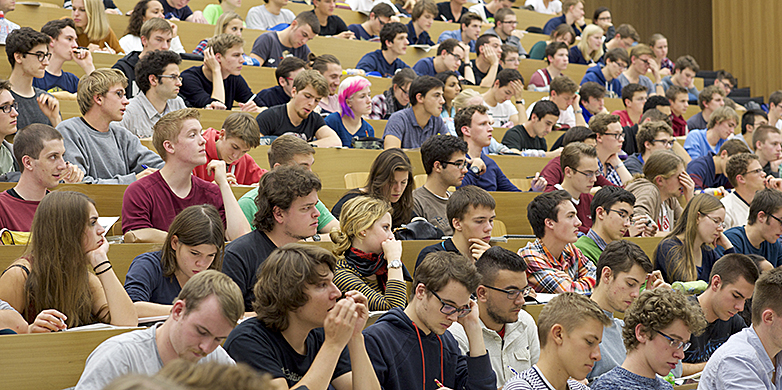Gender bias in astronomy quantified
Research
Numerous studies and anecdotal accounts support the notion that scientific work performed by women is treated differently from that of their male peers. Seeking to quantify such gender bias, three ETH PhD students have performed a systematic study of more than 200,000 astronomy publications. The result is unequivocal: papers with female lead authors received on average some 10% fewer citations than similar papers with male lead authors.

Across scientific fields, there is evidence for gender bias. In particular so when it comes to scientific publications, where the gender of the authors should not matter in theory, but does in practice. It was found, for example, that a paper can be rated lower by referees when the first author — typically the person who has contributed most to the scientific content reported — is indicated as being female. Also, women are underrepresented in prestigious publications and tend to receive fewer citations in general.
But even if the evidence available clearly points in the direction of a pronounced gender bias, quantitative studies on representative samples have been sparse. As a contribution to filling this gap, Neven Caplar, Sandro Tacchella and external page Simon Birrer of the Institute for Astronomy now present the largest quantitative evaluation so far of gender bias in the field of astronomy. They looked at a sample of more than 200,000 publications that have been published between 1950 and 2015 in the five journals Astronomy & Astrophysics, Astrophysical Journal, Monthly Notices of the Royal Astronomical Society, Nature and Science. Not only are these journals with long historical records, they also cover the loin’s share of research papers published in the field of astronomy.
Gender matters
To deal with such a huge amount of data, the ETH researchers used a machine-learning technique known as the 'random forest' algorithm. In essence, they trained this algorithm with a sample of papers with male lead authors, such that it could learn making predictions on how many citations are expected for a paper that appeared, for example, in a given year in a specific journal, with defined numbers of co-authors and references cited. These parameters, together with several others included in the study, are not gender specific. When the trained algorithm was then used to produce predictions for papers that Caplar, Tacchella and Birrer knew had a female lead author, there was a significant difference between this prediction and the real number of citations received: Female authors received on average 10.4 ± 0.9 % fewer citations than when the same paper would have written by a male author. The bias is getting smaller over the years, and the fraction of papers with a female first author has been going up, from below 5% in the 1960s to about 25% today. Nonetheless, throughout the period studied, the number of citations received is higher for papers with a male first author compared to papers with a female first author.
Natural tools for astronomers
Working with extensive datasets and controlling for a wide range of parameters that might cloud the view on the information of interest is an integral part of modern astronomy. Indeed, the present project started when Caplar, Tacchella and Birrer — at the time PhD students in three different groups of the Institute for Astronomy — took a course on data science in the Department of Computer Science.
When turning to practical applications of what they had learned, they remembered a talk at ETH on “Women in Science”, by the renowned astronomer Meg Urry of Yale University (USA). They were in particular impressed by the fact that Urry presented ‘hard data’, rather than just anecdotal evidence, underlining the gender bias in science. Thus they had an ideal project both to apply important tools of astronomy research and to obtain unbiased insights into their own community.
The questions regarding the origins of the gender bias and of how it is best addressed do of course remain open. But studies like that one now presented by the ETH researchers should provide a firm basis on which such discussions can be based.
Reference
N. Caplar, S. Tacchella & S. Birrer, Quantitative evaluation of gender bias in astronomical publications from citation counts. Nat. Astron. external page doi: 10.1038/s41550-017-0141 (2017).
Longer version: external page https://arxiv.org/abs/1610.08984